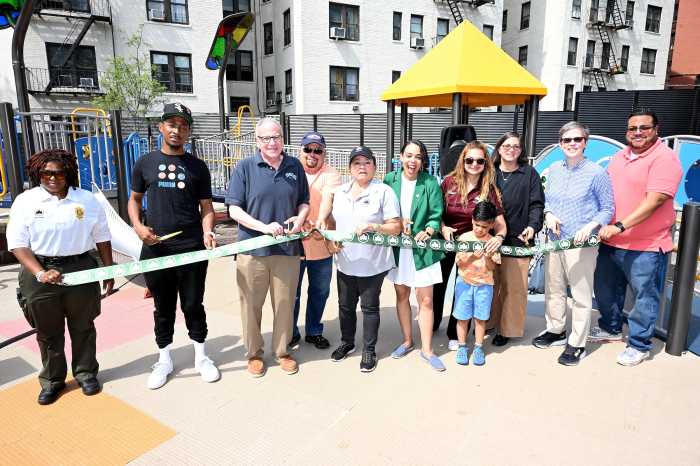The new Willis Avenue Bridge has reached its final resting place.
On Monday, August 9, the steel structure, which will replace the existing stretch that crosses from Manhattan into the Bronx, was barged about 250 feet down the Harlem River to where it will stay as Department of Transportation crews install the final pieces to make the bridge operable and open to traffic.
Mayor Mike Bloomberg and DOT commissioner Janette Sadik-Khan marked the occasion with a ceremony Monday, August 9, to commemorate the end of the bridge’s long trip down the Hudson River.
“The arrival of this bridge has been a magnificent riverside sight in recent weeks, and its installation today is an engineering marvel,” Sadik-Khan said. “Investments in our infrastructure rarely appear so dramatically, but it is a fitting entrance for an asset that will endure and serve New Yorkers every day for years to come.”
With the 350-foot swing section in place, crews will now complete the electrical and engineering work to connect the span to the recently constructed approaches. The work is expected to take about two months, and the bridge should be open to traffic by October.
The existing span will be removed within weeks of the new span coming online, officials said.
“We expect the new bridge to be open to traffic, with no interruptions, this fall,” Bloomberg said, adding that the $612 project is part of his $5 billion investment in bridges citywide. “We have said time and time again that we will not walk away from making the investments needed to build a better future for our city. The new Willis Avenue Bridge is the latest example of the progress our administration has made in rebuilding the city’s infrastructure.”
Construction on the replacement began in March 2009 and last month the new bridge itself drew media attention as it slowly traveled from where it was constructed, in the Port of Coeymans, more than 100 miles south on the Hudson River, to Bayonne, New Jersey.
On July 26, it was barged under the Brooklyn Bridge to where it remained until Monday morning.
The 2,400 ton, steel structure will open on a pivot to allow nautical traffic to pass under the river. According to DOT officials, the new structure is expected to eliminate tight turns, and will feature wider driving lanes and improved connections with surrounding roadways, including a direct connection with the northbound Major Deegan Expressway. There will also be new amenities to the bridge, such as a biking path.
The city decided to replace the nearly 110-year-old structure because it “has reached the end of its useful life,” DOT officials said.
The northbound-structure carries about 70,000 cars from Manhattan to the Bronx each day.























